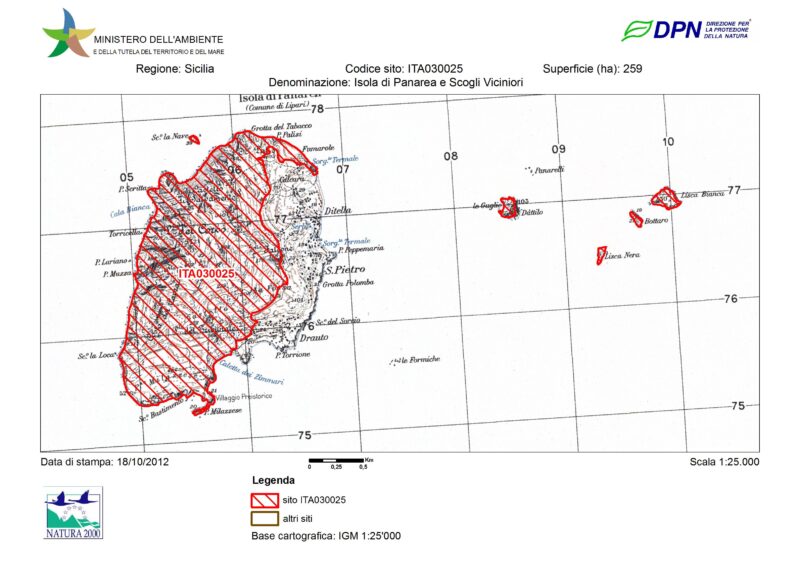Island of Panarea and nearby rocks (ITA030025)
Site type: SAC Special Conservation Area
Code: ITA030025- Hectares: 259
The island is the oldest of the archipelago whose emergence dates back to about 600 thousand years ago; in fact there are no well-preserved volcanic buildings. The western side is the most inaccessible and inaccessible one with steep cliffs and gullies. The western side instead slowly degrades towards the sea and is the one affected by inhabited and cultivated. In the vicinity of Panarea there are large islets covered with natural vegetation. From a climatic point of view, the island is affected by a climate sub-humid thermomediterranean with average annual rainfall of about 600 mm and average annual temperatures of around 18 ° C. The vegetation is represented above all by the scrub and bushes with Genista tyrrhena, while the woods with Quercus virgiliana are rare, of which limited strips remain. Well represented are the casmophilous aspects rich in endemic species, for some of which Panarea is the only known station of the archipelago. Along the coast yes halophilous formations are found in Limonium minutiflorum and garrigue in Helichrysum litoreum.
Currently Panarea is on the whole quite degraded due to the anthropic impact (cutting, crops and fires). In fact, they are now quite rare forest formations while the secondary shrub aspects linked to the destruction of the woods are widespread. Among the best preserved plant communities they are worth mentioning the halophilous coastal ones and the chasmophilous ones of the rocky environments. From a floristic point of view, the island is the most important of the entire archipelago, as species absent from the rest of the other islands are found here. phytogeographic, in turn mentioned in the list in section 3.3 (D). The island is located on an important migratory route for birds of prey and storks that affects the same migratory flow as the Strait of Messina. The passage of passerines is also significant, especially in autumn; abundant are Turdids and Silvids. Among the nesting species, the most important presences are represented by the colonies of the Queen's falcon, located on the rocky cliffs. Among the passerines, the presence of Magnanina is important. The conservation status of the habitats can be considered good and allows to host a relatively rich fauna with some endemic species, sometimes only of the Aeolian archipelago.

Source: Ministry of the Environment Natura 2000 form
Ministerial data: Natura 2000 form
Card insertion: Ignazio Caloggero
Photo: web
Information contributions: Ignazio Caloggero, Region of Sicily



